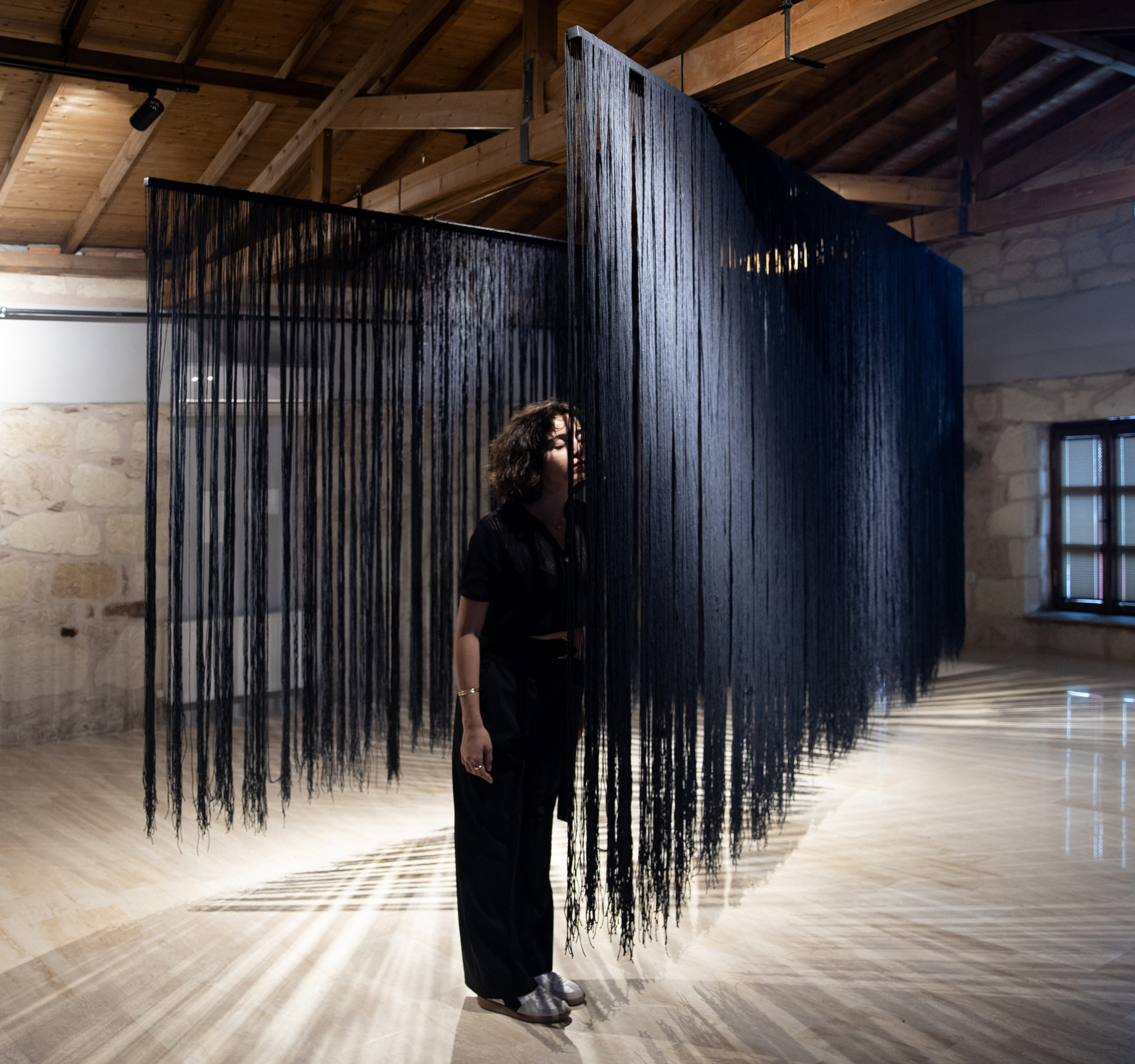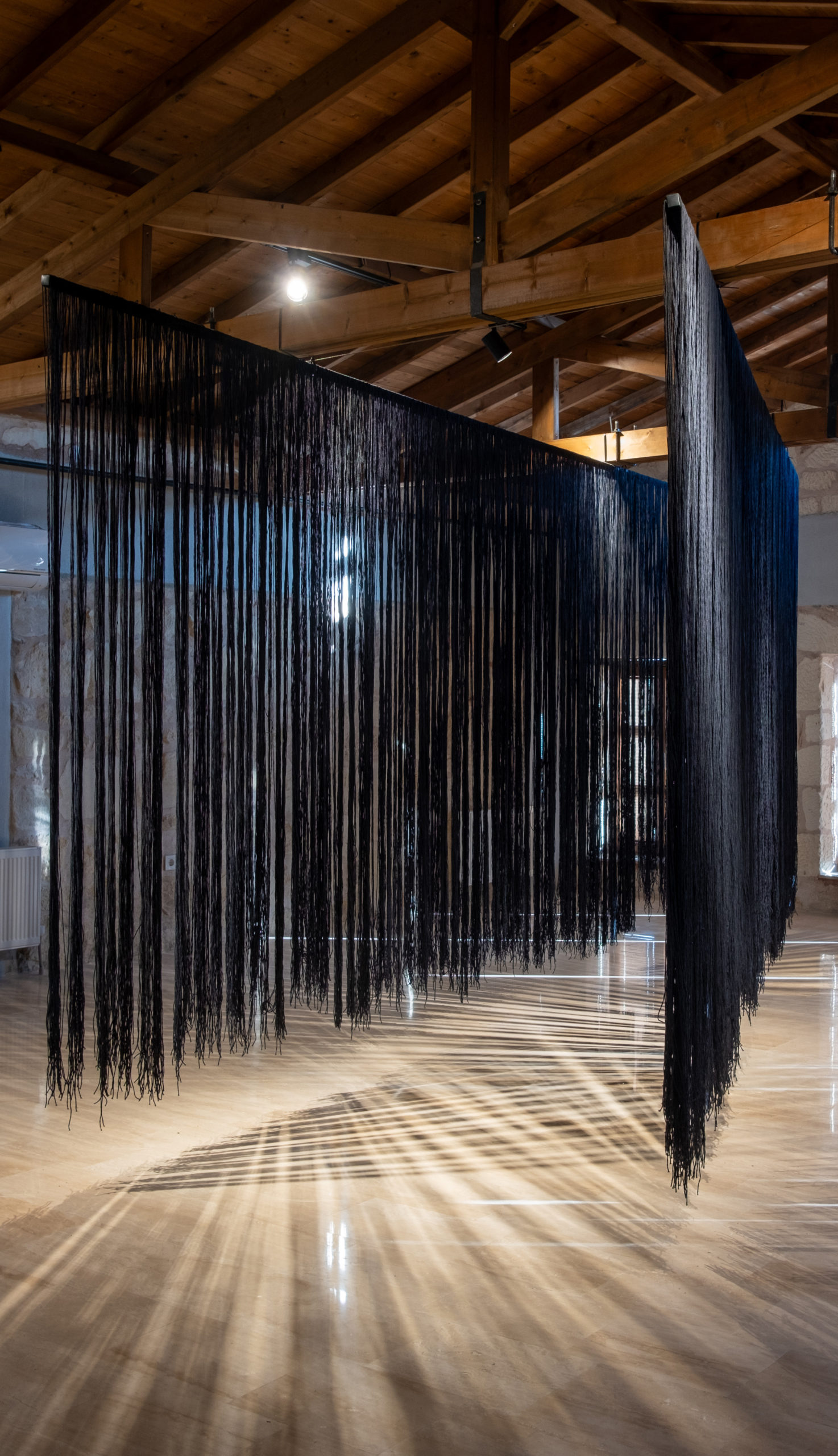FIG, HUMAN, SOIL;
An interdisciplinary art project exhibited at 9th. Çanakkale Biennial, 4.10 / 11.11 2024
Aside from his sculptural practice, which predominantly features aromatic wood species to establish a distinct sensory connection, Ahmet Yiğider ventures into interdisciplinary works that delve into the realm of senses, particularly the sense of smell. Though invisible to the eye, smells are among the most palpable traces of nature and vitality. Yiğider’s art production offers a unique and thought-provoking sensory experience, where he employs scientific methods, including high technology like gas chromatography – mass spectrometry (GC-MS) *, to analyse smells. His ongoing interdisciplinary work focuses on some eusocial living species and analysing smell signal codes that facilitate communication within these species.
“Fig, Human, Soil” takes its name from the artist’s sensory project of the same name exhibited at the historical “The FeHAN” building within the scope of the 9th Çanakkale Biennial. This installation divides the void with cotton thread dangles and scent molecules. The artist’s poem “Hands of a Fig” is also included in the biennial exhibition.


The path formed between two lines, the boundaries of which are determined by the scent, narrows as it progresses and takes the viewer to a single point: the scent of soil. On both sides of the installation, on one side, the scent of fig transforms into the scent of soil with every step. The “scent of human” also transforms into the scent of soil with every step across the side. As the walking by the scent of fig and scent of human, they lose their characters and become a familiar scent of soil at the meeting point. While the scent creates regions with invisible boundaries within the void, on the one hand, it is impossible to prevent it from spreading to the entire space. Therefore, the scent of fig, human and soil constantly knead with each other in the space.
Yiğider’s volatile molecule findings obtained through GC-MS analysis from neutral fabrics that were left on a sleeping baby’s skin (mainly in the neck area) for 8 hours with the permission and control of their parents formed the basis for the character of human odour. Now, molecules hexanal (aldhyde C-6), heptanal (aldhyde C-7), octanal (aldehyde C-8), nonanal (aldhyde C-9) and isovaleric acid are the most basic and dominant volatile compounds from that analysis and added to the formula. The effect of food, one of the most important external factors on the odour characteristic of adult human skin, preserves its pure and original character in the baby experiment during the breast milk phase. Because breast milk offers a tremendous filtering feature regarding the odours passed from food to the skin.
The findings obtained by analysing the volatile components taken from the baby’s skin and the accumulation of general literature constitute a fundamental and scientific basis for the artist. On the other hand, he prefers to stylise the “musk” character as an aesthetic representation of the odorous body secretion for all mammalian species. In this sense, the “musk” smell is a part of the representation of human smell.
Musk is the name of the strong-smelling component secreted by a male deer species in its body and accumulated at a point close to its testicles. Its primary purpose is to ensure that this species attracts its mate. As we can attribute to the general body odour character of the creature in question, the urine smell of the beast is noticeable during the reproductive period since it is at a point close to the urinary bladder. Obtaining the musk smell from the deer in question or other animals has been forbidden for over a century.
Ahmet Yiğider challenges an assumption in his fictional universe. As a dominant (or perhaps even invasive) species, humans interpret the world, pondering questions about existence and the universe where the limits of perception have been pushed to their reality. They see their species as the heir of the knowledge and consciousness they have attained. The artist, however, seeks to confront the reality of a completely different living form, the “fig”, which possesses consciousness and raises brand new existential questions in a distant future where humans no longer exist. This new consciousness yearns to engage with the cognitive, not biological and archaeological, remnants of the human species that lived millions of years ago to sense, see, and understand them.
* Gas chromatography – mass spectrometry (GC-MS) is an analytical chemistry method that uses high-tech devices to understand the molecular structure of volatile compounds under examination in natural sciences fields such as chemistry, biology, and genetics or particular fields such as criminology.
HANDS of a FIG
What fig’s roots am I?
I flow in the leaves, veins,
fruit, and roots of a fig tree.
I’m its consciousness.
I’ve been sprawling my branches
across the cosmos
for over forty million years,
And shall be for another forty million more…
I reach out to nature, the universe,
everything in existence,
and existence itself…
I reach out to wisdom, love, transition,
And metamorphosis…
What fig’s hands have I?
I exist post-wisdom,
And pre-consciousness.
But in what form?
What fig tree’s gaze have I?
What fig’s eyes have I?
Ahmet Yiğider
